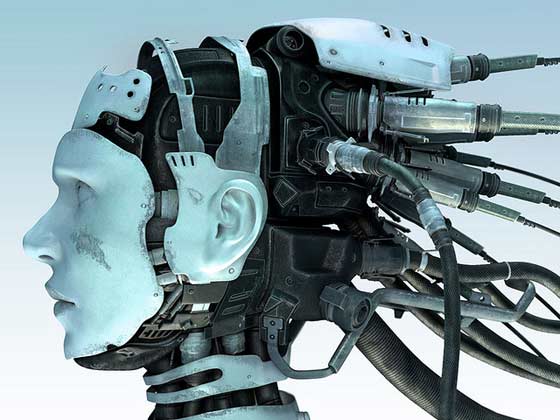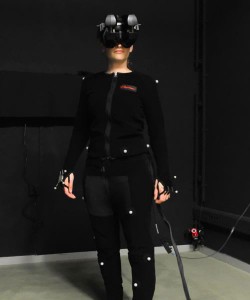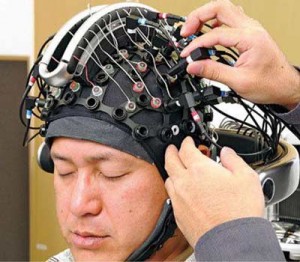
The future of cybersex: Landing in a hamburger
UPDATE: almost ten years after we wrote this article, there now is a virtual reality LIVE webcam sex site. Read this: Cheapvrcams virtual reality webcam article on cheaperwebcamsex.com for more info. Pretty fucking amazing, right?
Let’s kick off with the definition of cybersex;
[quote]cy·ber·sex/ˈsībərˌseks/
Noun:Sexual arousal using computer technology, esp. by wearing virtual reality equipment or by exchanging messages via the Internet.Sexual arousal using computer technology, esp. by wearing virtual reality equipment or by exchanging messages via the Internet.
[/quote]Pretty clear. Now you might think we’ve come a long way over the past decades when it comes to cybersex, and indeed we have. But this is nothing compared to what we will achieve in the following decades. Ray Kurzweil, an American futurist, and inventor predicts that around 2030, computers will match the ‘power’ of the human brain. Around the same time, humans will have ‘fully’ reverse-engineered the human brain.
–Notice power and fully being between quotation marks because one can argue over the definition of the power of the human brain: “Are we talking about raw computing power only? If so, will a device capable of simulating all the brain’s computations/processes have a conscious mind and emotions and act as their human counterparts? If not, is it as powerful as a brain then ?” etc. The same goes for the reverse engineering of the brain part. Even if we understand this grey mass up to the point that we can build artificially intelligent systems, which in the eyes of a human observer are indistinguishable from real humans, it doesn’t necessarily mean we have fully reverse-engineered the brain because of the simple fact that there might be sub-sub-atomic processes that we don’t understand or are just unaware of. But this has been an ongoing debate for many, many years now between scientists. A discussion in which I will not mingle for now because my intention is not to write a scientific article, no. I want to explore the different hypothetical evolutions in the cybersex industry and their impact on human sexual interaction and social life in general without being too technical or worry too much about the scientific feasibility of it all.-
So it’s 2030, and computers have the power to simulate the brain, and we fully understand the brain’s working. This combination opens a doorway to unimaginable pleasures (and horrors). Before we delve into this epic point in future history, let us first look at the road leading up to this moment and the different changes, specifically in cybersex, that will most likely occur.
The visuals
1080p, Hi-definition, HD-ready,3D, etc., are terms you’re probably familiar with. These technical terms should need no explanation. You can find the same terms in the webcam sex industry. Where webcam sex once consisted of low resolution heavily pixelated streams with horrible frame rates, the introduction of high-speed broadband Internet and high-res displays changed all this. It brought us crystal clear, razor-sharp live nudity on our televisions, laptops, and PCs. And more recently, due to high-speed wireless connections, the same high-quality nudity is also available for mobile devices like tablets and phones. But when it comes to 3d, the adult scene still has a lot of catching up to do compared to mainstream movies. Yes, the 3d porn movies are starting to pop up, and there are also a few cam-girls offering live shows in 3d’s but nowhere near the magnitude of the aforementioned mainstream movies. I think this is mainly because 3d is not yet as standard in computer screens as it is in normal televisions, so I’m pretty sure that in the next few years, when 3d will be standard in all displays from computers to mobile phones, the demand for live 3d content will rise and subsequently the supply. One thing is for sure the majority of the big adult corporations agree: 3d is the next big thing in porn and cybersex.
Holographics
So what comes after 3d? one possibility is holographic. Holographic research is progressing rapidly, and you might have already seen some holographic displays at concerts or other events. There are different methods to produce holographic displays. Not all of them are considered true holographic, but I’m not writing a scientific article, so I won’t go into all the different methods. While 3d TV gives you an illusion of 3d, a true holographic device creates a real three-dimensional shape. So when having cybersex, you can have a live copy of your cam partner “present” in your bedroom. You will be able to walk close to them, walk around them and look from any angle you’d like, whereas if you’d walk around your television, you’d see well…. the back of your television. Also, you are not watching a screen, but you are watching a ‘real person’ performing in your own room, which must be quite exciting and would surely increase the entertainment factor of webcam sex.
Virtual Reality
Another option is virtual reality glasses/helmets. Wearing virtual reality glasses is like playing a computer game with the difference that the illusion of being ‘inside the game environment is created. For example, with a computer game, you can look left or right. But you are still watching a television screen in front of you. You are not turning your head left or right. No, you are merely watching an image on television presenting you with the image of left or right. Virtual reality glasses do pretty much the same with the difference that the displays are so close to your eyes that, unlike a TV, they move along with the movement of your head, and the displays are the only thing you see, thus creating the illusion of being in a virtual world. Ideally, the glasses would detect your body movements, so
moving your head left and right really lets you look left and right in your virtual world. It’s also possible to really walk, but unless you like to take the risk of -walking around in your room and stumbling over your $20000 holographic projector and falling with your newly bought 10000 dollar glasses through your 3d TV- it might be safer to control walking by a remote or by gestures or by thought. Because remember, you can only see the virtual world when wearing the glasses. In this way, 2 (or more) people engaging in webcam sex can be together in a virtual environment even if they live far apart.
Of course, creating photo-realistic persons and environments in real-time is a key factor (real-time is necessary for live mimicking of persons) because it is not really exciting if the digital version of your beloved webcam girl looks like Pacman. But we are already creating photo-realistic people and environments in movies, so this shouldn’t be a problem. Soon in 2008, image metrics released an amazing demo showcasing an interview with a digital representation of a real person. While still recognizable as computer-generated imagery, it was pretty impressive. In 2011 thousands of fans of Japan’s pop band AKB48 were fooled into believing the band had a new member named Eguchi Aimi when Eguchi was a computer-generated person.
While it may not be real-time, it shows that the entertainment industry is moving more and more towards computer-generated entertainment. With the yearly exponential growth of computer processing power, we are now on the verge of making photo-realistic virtual reality possible and affordable for regular consumers. A nice feature of using a computer-generated copy of a real person is that you can change the person’s looks into anything you want, read head, brunette, big-breasted, thick or thin, a frog, the possibilities are limitless.
Haptics
Now while all the aforementioned obviously brings cybersex closer and closer to the real deal (actual sex including real physical contact), one thing is missing, one significant thing, the sense of touch. Yes, people are touching themselves, but what if two people having webcam sex could touch and feel each other? Well, they can, through haptics.
Haptics is a tactile feedback technology which means a technology aimed at the sense of touch. Whatever happens on the screen, you can see with your eyes. With Haptics, you can also feel what happens on screen. It might sound like science fiction, but the technology is pretty old. In the seventies, the first computer games in arcade halls already had Haptics (i.e., vibrating steering wheels during car crashes in race games. Before that, Haptics were applied in remote-controlled machines to have better control when dealing with hazardous materials, deep-sea expedition devices, etc. The first Haptic cybersex systems saw the daylight during the early nineties, most notably the CyberSM system, consisting of 2 remote-controlled full-body suits. The remote-controlled functions consisted of activating various electric shockers and vibrating points in the other person’s bodysuit over an ISDN line. In the following years, Engineers created more Haptic sex devices. Remote-controlled dildos, USB-connected Mechanical vaginas, which upon entry activated a vibrator on the other side of the internet line, and there are webcam sites that let you control several toys in the performer’s room, but to my knowledge Haptics in cybersex still really hasn’t hit off. I think the devices are still too clumsy, and the desired effect is not reached. It’s not easy to recreate human touch with a mechanical device, and for now, it is probably more hilarious than erotic. It doesn’t mean Haptics in webcam sex is not interesting to follow. It certainly is. We are working towards full-body suits which can exert pressure all over the body in every thinkable spot. Imagine if you combine this with a virtual reality device. Together in a digital environment where you can feel it when somebody touches you, pretty amazing, right? And Haptics are not only combinable with virtual reality devices. Scientists researching holographic interaction are even trying to create touchable holographic creations (through sound waves ). Touchable holographic girls and holographic girls that can touch you. Now we’re talking!
All in all, touch is one of the most important senses when having sexual interaction of any kind. When we can recreate this realistically, cybersex will make a huge leap forward as an erotic experience. But in which time frame will this be possible, and how close can it get to the real thing? I’m sure of one thing. It will never get as close as the following subject.
Brain computers
Stash your virtual reality helmets and your Haptical suits away in your basement because finally, we have arrived in 2030! We have the computing power to simulate a human brain, and we fully understand the working of the human brain. What does this mean? Like so beautifully portrayed in the Terminator movies, one possible doomsday scenario is: Computerized devices (Probably everything around you by then) will become a zillion times smarter than humans and squash us all like little insects. I’m not too fond of this scenario, so let’s assume we will survive, and let’s take an example that instantly creates an easy bridge to cybersex. To put it simply, we can read the brain (take info from it) and feed it to the brain. We are already able to read brain waves today. In 2012 we didn’t know what they all meant. Once we have reverse-engineered the brain, we will understand it all, and the unimaginable becomes possible. You will be able to go to bed, record your brain activity and in the morning watch your recorded dreams from the last night on your television ( I mean on your holographic display). It also works the other way around. You can feed “dreams” to your brain. See it as a simple DVD recorder, you can record your favorite television show, but you can also rent a DVD and watch your favorite movie. The device that connects your brain to an external device is called a brain-computer interface. An interface that is directly connected to your neural system. We already have similar devices like this in medical science today. We have made blind people see again, deaf people hear again, and paralyzed people move again. We have managed to let animals watch at objects and directly record the stream from the brain, analyze it, and turn it back into an image showing the object on display (like the DVD recorder example only far more simplified). We have created radio-controlled rats etc.
If you can feed info to all your senses directly, then the moment has arrived that cybersex will not only be equal to real-life sex, but it will surpass it because your wildest dreams will become a reality. You will be able to truly feel and see and hear and taste ( not really sure if that’s a good thing) situations that you could never in real life. You could choose to live in a world with only women in it, millions of naked women who all want you! You can jump out of an airplane while having sex before landing in a gigantic hamburger, and it would be just as real or, if you prefer, more perfect than it would if it was possible in real life. So there you have it, the future of cybersex is landing in a hamburger.
Pure perfection! or not? Let’s think about this. Apart from all the dangerous scenarios this technological revolution brings with it, isn’t part of what makes sex amazing the desire? And isn’t desire partly created by what you don’t have or what is not easy to get. I mean, if you have 24/7 access to perfect sex, will it still be perfect after one year, after two years, or will we discover that it is the imperfections in human relationships that make sex perfect? I’m tempted to say yes but wait; we can also simulate imperfections with our mind machines. Problem solved!
But what effect will such devices have on human social life? We don’t have to look to the future to see a rise in computer and Internet addictions. No, this is already happening right now. Internet and computer addiction is not uncommon terminology. Will we all be ‘plugged-in’ 24/7 matrix style? Will there even be any flesh to flesh contact? Or will organic human life cease to exist, and will we upload our minds on the web and live as conscious entities in cyberspace. Will nerdy programmers be the best-paid actors in the adult scene? Surely a girl from flesh and blood can make no money when everybody has access to all sorts and shapes of women digitally who give them better orgasms than real-life girls can and can do things no real girl can ever do.
It’s very likely human, and Artificial intelligent minds will have relationships. Now you might think you couldn’t and won’t ever fall in love with something that’s not human. Maybe, but think about someone close to you that has passed away, a family member, close friend, or a lover. In the future, we will most likely be able to upload one’s mind to a computer. So when someone dies, they stop existing in their human form, but you would still be able to talk to their digital legacy. Now you can argue it is only a simulation you are talking to. It’s not a real conscious mind, not the same person. Again this is a statement subjected to intense debate amongst scientists. Is a simulation like that really different from the real person, or are they still the same conscious mind? We might never be able to test consciousness objectively. But maybe a conscious mind, one’s self, soul, or whatever you want to call it in our human form is only the sum of the brain’s calculations/processes. After all, the brain is basically nothing more than a computer, so it might very well be that an uploaded mind in a computer is still the same ‘person.’ The only difference is the calculations/processes are no longer taking place in the brain but in a computer.
So let’s assume we are still living in our human form and someone close to you dies, and like said, you can still talk to them. You might both be aware that the human part of life has ended, but you still share the same memories. You can still ask for advice, talk about the future, share your experiences. Are you really sure you wouldn’t care for this ‘person’ if there is no noticeable difference in communicating? Would you stop loving someone if they needed a pacemaker or a new hip? Or if they had an accident and needed an artificial leg, kidney, or heart? No right? What if they needed two new artificial legs and arms, lungs, and a heart? You’d still love them. Is it any different when they would change their brain to an artificial one? After all, isn’t the brain just another part of the body like a heart?
When you look like it this way, it doesn’t seem unbelievable that one can have feelings for artificial minds. And there should be no difference between artificial minds that are copied from organic brains or beings that are born/created digitally. Especially when you put this artificial mind in a body that looks and feels the same as a real human, this can be in a simulated world or in real life, which we would call a cyborg.
Again this sounds like movie stuff. But a cyborg is nothing more than a being with organic and artificial/mechanical elements. Someone with a pacemaker could be called a cyborg. In the future, we can create cyborgs from scratch, and the end product would be indistinguishable from real humans in looks, feel, and behavior. Love robots will be a reality. You can have one created to your specifications, the perfect looks and personality!
Conclusion:
For now, cybersex will be different from regular sex, and the industry will strive to improve and make cybersex as real as real-life sex. During this quest, some unique, entertaining products will appear, and this will continue up until the point that real life and cyber life merge, molded into one reality. Once we have the possibility of simulating any reality we’d like, we wouldn’t need any new devices for sexual pleasure. We could simulate them. In the introduction, I quoted the definition of cybersex: Sexual arousal using computer technology. It is possible that life in virtual worlds fully replaces life as we know it, and we would only live in cyberspace. In this case, having sex in whatever form would fall under today’s definition of cybersex. Of course, this hypothetical case will be in the far, far future. For this article, I took Ray Kurzweil’s prediction of 2030 being the year when computers match the human brain’s power, and reverse engineering of the brain will be possible. This prediction is widely regarded as optimistic. Even if 2030 were correct, it would take many more decades of research to create brain computers capable of delivering a virtual world indistinguishable from real life. And it would take many decades or centuries more for the whole human civilization to live in a virtual world. Of course, this might never happen. Human society might choose to keep a physical form. Even if this is the case, it doesn’t change anything because life-like virtual reality is coming. Maybe we won’t choose to live in it permanently, but you can bet your 3D TV on it that it will be used for entertainment and not in the least for sexual enjoyment. Also, we will live side by side with cyborgs, no doubt. Sex robots will be as everyday as today’s vibrators are now. What impact will all this have on human social life? Human social life as we know it will change, that’s for sure, but for the good or the bad?
A lot of questions and a part of me cannot wait to find out the answers, but the other part is terrified for what’s about to cUm












